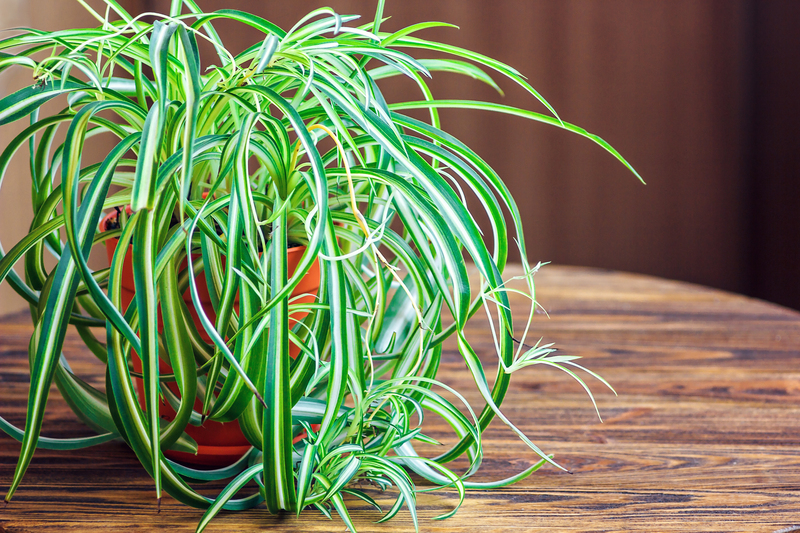Refreshing a Neglected Garden: Step-by-Step Start
Posted on 17/08/2025
Refreshing a Neglected Garden: Step-by-Step Start
A once-vibrant garden left unattended can quickly become a tangled mass of weeds, overgrown bushes, and forgotten beauty. Fortunately, with a structured approach, anyone can breathe new life into a neglected outdoor space. This comprehensive, easy-to-follow guide will walk you through every crucial step to reviving a neglected garden -- from assessment to maintenance, ensuring you transform it into a thriving paradise you'll be proud of.

Why Should You Restore a Neglected Garden?
- Boosts home value and curb appeal
- Provides a peaceful, enjoyable outdoor space
- Encourages biodiversity and supports local wildlife
- Enhances mental health and well-being
Neglected gardens often have untapped potential beneath the chaos. By starting the process of refreshing your abandoned garden, you not only create beauty but also support the environment and enrich your personal life.
Step 1: Assess the Garden's Current State
Observe and Take Notes
Begin your overgrown garden rescue by taking a walk around the area. Pay close attention to:
- Types of weeds and invasive plants present
- Existing trees, shrubs, and perennials worth saving
- Structural features: fences, paths, sheds, raised beds
- Evidence of pests or disease
- Sunny, shady, wet, and dry areas for planting plans
It helps to sketch a rough map and photograph problem spots. This will guide your restoration plan and help track progress.
Step 2: Gather Essential Tools and Supplies
- Gardening gloves: Protect your hands from thorns and soil-borne pathogens
- Pruning shears and loppers for trimming shrubs and small trees
- Weeding tools (hand fork, hoe, dandelion weeder)
- Garden fork and spade for turning soil and removing roots
- Rake: For clearing fallen leaves and debris
- Wheelbarrow or bags to haul away waste
- Compost bin or heap for green waste recycling
Start with these basic tools, then add specialty items as needed (like a soil tester).
Step 3: Clear and Clean the Space
Remove Large Debris
First, remove any large rubbish, broken pots, or unwanted furniture. Next, clear out fallen branches, litter, and accumulated debris that may be hiding in the undergrowth.
Deal with Overgrown Plants and Weeds
- Use shears or a hedge trimmer to cut back tall grasses and straggly shrubs. Don't worry about shaping perfectly yet; focus on accessibility.
- Dig out weeds using a fork or hoe, being sure to remove roots to prevent regrowth.
- For tough, deep-rooted invaders, consider a weed puller or a natural (non-toxic) weed killer solution.
- If plants are diseased or dead, remove them entirely and dispose in waste (not compost) to halt spread.
Step 4: Restore or Repair Garden Features
Fencing, Paths, and Beds
- Check fences or gates for stability; repair, repaint, or replace as needed.
- Clear moss and weeds from paths using a stiff broom; repair any broken paving stones or gravel.
- Re-edge neglected borders with a spade to restore crisp, defined shapes.
- Repair or rebuild collapsed raised beds, trellises, or compost bins.
*Caring for these structures early in your garden refresh creates a framework for plants to shine.
Step 5: Improve the Soil
A healthy garden starts with rich, living soil. Years of neglect may have left soil compacted, depleted, or overrun by weeds. Here's how to rejuvenate it:
Soil Testing and Preparation
- Test soil pH and fertility using a simple home soil kit (available at garden centers).
- Turn the soil with a garden fork. Break up compacted ground and incorporate organic matter (compost, well-rotted manure, leaf mould).
- Address drainage issues by digging in grit or sand where water pools, or double-digging heavy clay soils.
- Mulch bare soil with bark chips or straw to suppress weeds while you plan new planting.
Step 6: Decide What to Keep, Remove, or Replace
Assess Existing Plants
Now that you've revealed what's beneath the weeds and brambles, identify what's worth saving:
- Established trees and healthy shrubs often provide valuable structure.
- Perennial flowers and bulbs may surprise you with a return after a little care.
- Compost or replant anything that's over-crowded or growing in the wrong place.
- Remove invasive or diseased plants to prevent future spread.
Don't be too quick to discard seemingly "dead" plants - some perennials recover dramatically with water and a little pruning!
Prune and Shape
- Cut back overgrown hedges and woody shrubs; focus on removing dead, damaged, or crossing branches.
- Shape evergreens and shrubs with careful, gradual trimming.
- Divide and replant perennials that look crowded or thin in the middle.
Step 7: Plan Your New Garden Layout
Think About Function and Flow
Even a basic plan helps prevent impulse planting and future chaos. Consider:
- Main uses: Relaxation? Play? Entertaining? Wildlife-friendly?
- Paths and destination points (seating, shed, play area)
- Sun vs. shade areas for optimal plant placement
- Which plants or features will anchor the design year-round?
Draw a simple diagram, marking out new beds, lawn, veg patches, or wildlife corners. This is your opportunity to get creative and shape a vision for your garden restoration project.
Step 8: Choose Plants Wisely for Sustainable Success
- Select low-maintenance, resilient varieties, especially in your garden's first season of recovery.
- Native plants support local wildlife and often thrive with less intervention.
- Mix evergreen shrubs for structure, herbaceous perennials for color, and bulbs or annuals for quick, seasonal impact.
- For dense, patchy areas, sow wildflower seeds to quickly add interest and feed pollinators.
When refreshing an overgrown garden, avoid overwhelming yourself by trying to do everything at once. Focus on a few areas, like a border or a seating corner, and expand gradually.
Step 9: Start Replanting and Mulching
With beds prepped and soil restored, you're ready to set new plants!
- Follow your new layout plan for planting, considering mature sizes and growth habits.
- Space plants generously -- overcrowding leads to future problems and extra maintenance.
- Water thoroughly post-planting and during dry spells, especially in the first year.
- Top dress with compost and an organic mulch layer. This retains moisture, suppresses weeds, and feeds the soil.
Step 10: Add Finishing Touches and Decor
- Install bird feeders or baths to encourage wildlife back into your green oasis.
- Set up new garden furniture or refresh old pieces with a lick of paint.
- Add solar lights or lanterns for evening ambiance.
- Consider water features or a new compost bin for ongoing sustainability.
These touches turn a revived garden into a true extension of your living space.
Seasonal Maintenance to Keep Your Restored Garden Vibrant
Regular Tasks
- Keep up with weeding and deadheading flowers to prolong blooms.
- Mulch and replenish soil as needed, particularly before winter.
- Mow and edge lawns regularly for a crisp look.
- Prune trees and shrubs annually for shape and vigor.
- Check fences, sheds, and features for maintenance needs after each season.
Frequently Asked Questions about Refreshing a Neglected Garden
How long does it take to revive an abandoned garden?
Most gardens can be significantly improved in a weekend or two. For greater transformations or wildlife habitats, plan for a full season or longer, allowing plants time to mature and recover.
What's the best time of year to restore a garden?
Spring and autumn are ideal for most garden work, as soil is workable and conditions favor new planting. Avoid digging frozen or waterlogged ground.
Can I restore a garden on a tight budget?
Absolutely! Begin with cleaning, weeding, and recycling what you have. Propagate cuttings, swap plants with neighbors, or sow seeds. Investing time and labor can make up for smaller budgets.

Sustainable Tips for Your Garden Renovation
- Compost green waste to enrich soil naturally.
- Harvest rainwater for watering instead of relying on mains supply.
- Choose peat-free compost for planting.
- Opt for hand tools over power ones to reduce noise and emissions.
- Create wildlife habitats with log piles or insect hotels.
Conclusion: Enjoy Your Transformed Sanctuary
Reviving a forgotten garden might seem like a daunting challenge, but by following these step-by-step tips, you'll find the process rewarding and therapeutic. Not only will you recover lost beauty, but you'll also create a living legacy for family, friends, and local wildlife. Remember: every thriving garden starts with the first small, bold step. Begin your garden transformation today!

